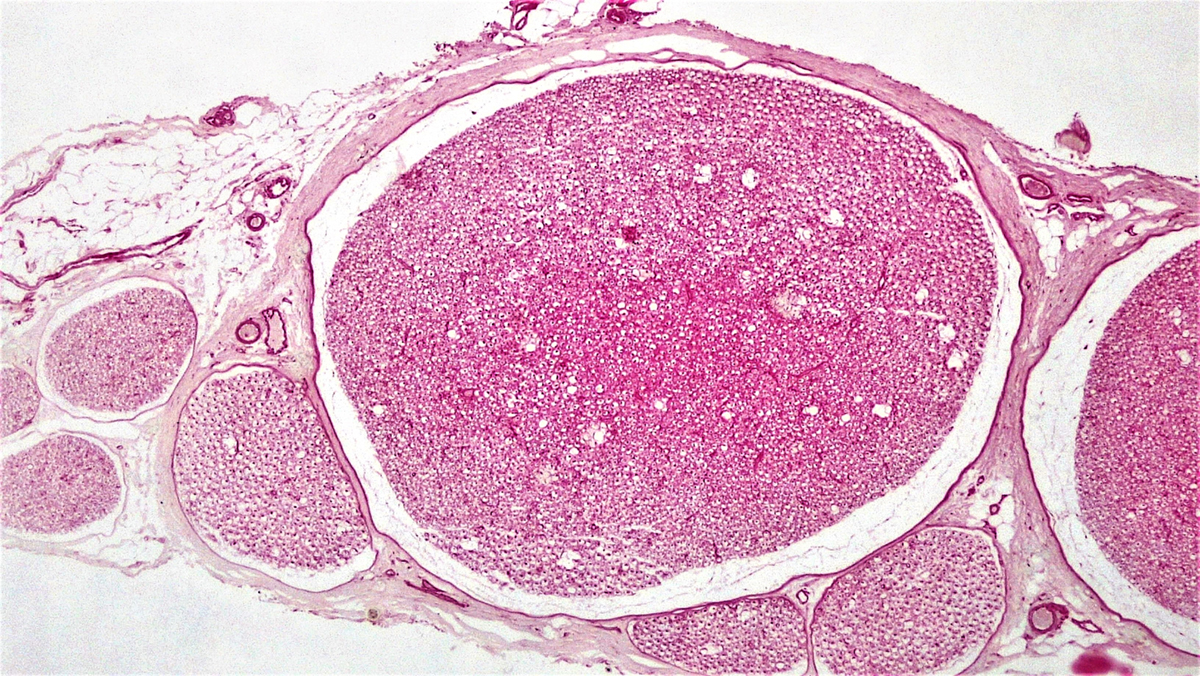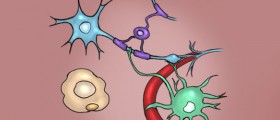
Nervous tissue is a class of vertebrate tissue, the main component of the nervous system: the brain, spinal cord and nerves - which regulates and controls the body functions. Nervous tissue consists of neurons and neuroglial cells. The main purpose of neurons is to transmit impulses. Neurologial cells, on the other hand, assist in propagation of the nerve impulses and provide nutrients to the neurons. Nervous tissue is specialized to react to stimuli and to carry out impulses to various organs in the body, which bring about a response to the stimulus. The histology of nervous tissue is the study of the microscopic anatomy of cells and tissues.
Neurons
Neurons are electrically excitable cells that process and transmit information by electrical and chemical signaling. Most of the neurons in the nervous tissue are generated before birth. Chemical signaling is possible via synapses, junctions that permit the neurons to pass an electrical or chemical signal to another cell. Neurons are the key compounds of the nervous system, which includes the brain, spinal cord and peripheral ganglia. There are various types of neurons. For example, sensory neurons respond to touch, sound, light and numerous other stimuli affecting cells of the sensory organs. Motor neurons, on the other hand, affect muscle contractions and glands.
Cell body
Cell body is protected by the plasma membrane, the barrier that separates the interior of all cells from the outside environment. Every neuron is surrounded by a plasma membrane, a bilayer of lipid molecules with many types of protein structures embedded in it. Since neurons are electrically excitable cells, they are able to maintain voltage gradients across their membranes. This is possible as many of the protein structures embedded in the membrane are electrically active.
Dendrites and axon
Neurons have long processes, which extend from the part of the cell body around the nucleus, the perikaryon or the Soma. Neurons are composed of the cell body, dendrites and an axon. Dendrites often extend for hundreds of micrometers and branch multiple times. Dendrites conduct the electrochemical stimulation received from other neural cells to the cell body.
An axon is a special cellular filament that arises from the cell body and travels for a distance. In humans, axon can travel as far as 1 meter. They are considered a long, slender projection of a nerve cell, or neuron, able to conduct electrical impulses away from the neuron's cell body.
Dendrites and axons are distinguished by shape, length and function. Dendrites often taper while axons usually maintain a constant radius. Moreover, they are restricted to a small region around the cell body while axons can be much longer. Finally, dendrites typically receive signals while axons typically transmit them.
















Your thoughts on this
Loading...